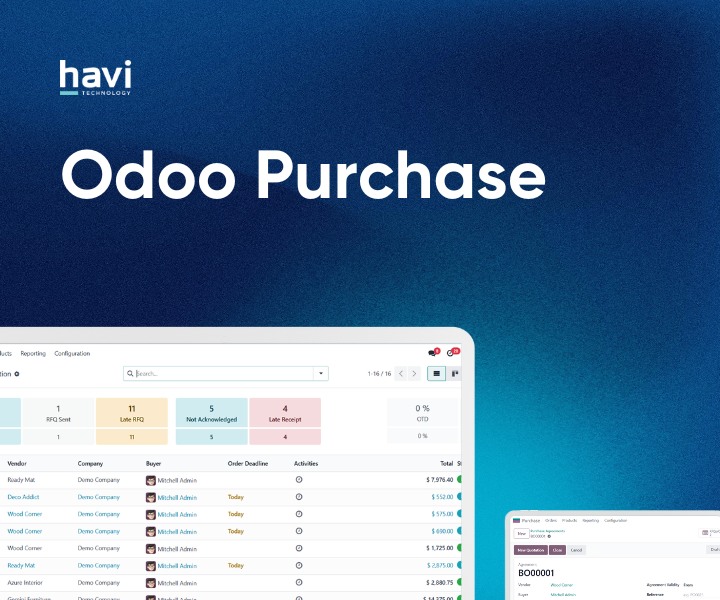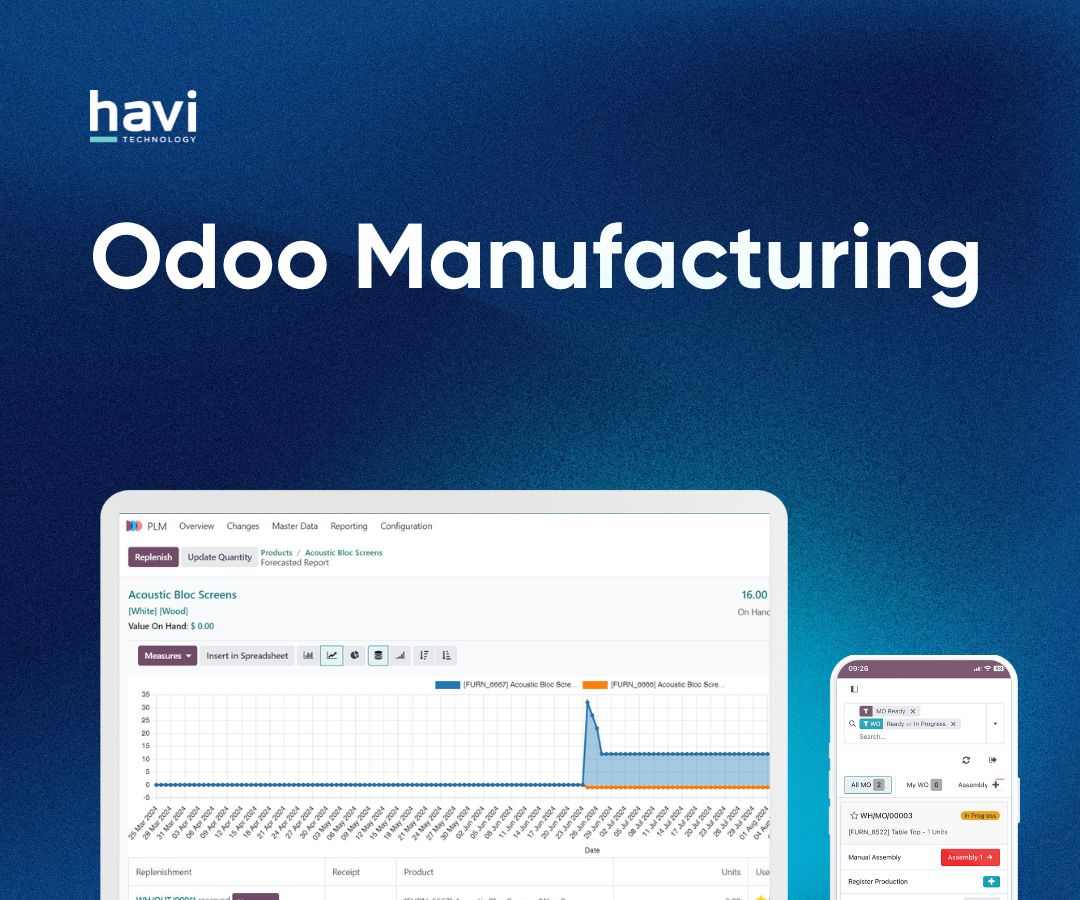TABLE OF CONTENTS
- 1. Website and Customer Experience
- 1.1. Website & eCommerce: Guided Onboarding, New Templates, Google Merchant Sync
- 1.2 Live Chat and Discuss: Expertise Routing, Chat Insights, Status Controls
- 2. Sales, CRM and Subscriptions
- 2.1 Sales: Editable Optional Products, Catalogue Sections, Portal Top-Up
- 2.2. CRM and Marketing: AI Probability, Lead Sources, Kanban Linking
- 2.3. Subscriptions: Prorated Billing, One-Time Sales, Portal Edits
- 3. Inventory, Purchase and Barcode
- 3.1. Inventory and Purchase: Packages within Packages, Forecasted Reports, Suggested Quantity to Replenish
- 3.2. Barcode: Operation Descriptions, Product Source Location, Lot and Serial Number Properties
- 4. Manufacturing, Shop Floor & Planning
- 4.1. MRP: Gantt View, Editable Deadlines, Labour-Based Valuation
- 4.2. Shop Floor & Planning: Barcode Workflows, Shift Scheduling, Routing Edits
- 5. Project, Timesheets and Services
- 5.1. Project and Timesheet: Smart Assign, Mobile Grid View, Priority Alerts
- 5.2. Field Service and Appointments: Calendar View, Technician Tracking, Mass Planning
- 6. HR, Payroll and Expenses
- 6.1. Payroll: Redesigned Engine, Payslip Correction, Unified Master Report
- 6.2. Time Off and Expenses: Odoo Master Cards, Multi-Expense Submission, Complex Duration
- 7. Accounting, Compliance and ESG
- 7.1. Accounting: Peppol Invoicing, Bank Sync, BAS Reports
- 7.2. ESG App: Scope 1–3 Emissions, CSRD Reporting, Auto Category Mapping
- 8. AI, Documents and Sign
- 8.1. AI App: Prompt Commands, Auto Field Completion, Voice and Web Search
- 8.2. Sign and Documents: Bulk Signing, Chatter Integration, Access Controls
- Odoo 19: What’s Coming For Australia?
- 1. Fully compliant Payroll AU with STP Phase 2 and SuperStream
- 2. ABA file payments, Direct Debit for wages/super
- 3. Multi-stream YTD import, backpay, and validations
- 4. 2025–26 tax rules, STSL changes, ATO security
- 5. Peppol invoicing, GST toggle, fringe benefits, BAS automation
- 6. Tyro integration
- 7. Roadmap: SBR BAS lodging, Open Banking, PEL Access, Fiduciary Program
- Odoo 19’s FAQs For Australian Teams
- 1. How should Australian businesses prepare?
- 2. How is Odoo 19 different from Odoo 18 in Australia?
- 3. How can AI in Odoo 19 be tailored for real business outcomes?
- 4. How can I try Odoo 19 or upgrade from my current version?





Asset management is the process of tracking a company's assets from acquisition to disposal, including depreciation computations. Odoo asset management features simplify this process by providing you with efficient tools for tracking, managing, and depreciating long-term business assets.
What does Odoo bring to the table for asset management? Let’s discover below.
Introducing Odoo Asset Management
1. What Is Asset Management In Odoo?
Odoo asset management is a core feature within the Odoo Accounting module. This feature helps companies record asset value over time effectively by tracking assets, calculating depreciation, and creating accounting input. These assets could be anything from houses and vehicles to machinery and equipment.
2. What Are Key Odoo Asset Management Functionalities?
To simplify tracking and managing a company's assets, the asset management feature in Odoo Accounting provides essential tools for users. It helps you optimise asset usage, improve financial efficiency, and streamline compliance with asset creation, categorisation, depreciation computation, or disposal.
How to Configure Asset Management In Odoo
1. Configure asset models
Step 1: Go to Odoo Accounting > Configuration > Asset Models
The asset you purchased will be assigned with the relevant Odoo asset model. In the list of models, you will see the asset name, fixed account, depreciation account, method, number of depreciations, and period length.
Step 2: Create a New asset model
When setting up an asset model, you need to specify its name, depreciation duration, method (i.e. declining, straight-line, or combination), and accounting information. This involves setting up the accounts for spending, depreciation, and asset purchases. You also need to decide how depreciation is computed over time (i.e. evenly spread or based on specific periods).
Step 3: In Odoo Accounting, go to Configuration > Charts of Accounts
Step 4: Choose the account you created in the asset model > View
Step 5: Go to the Automation tab > Select Create and validate to link a model to the asset.
2. Record assets
Step 1: In Odoo Accounting, go to Vendor > Bills
Step 2: Generate a vendor bill and select the corresponding asset model for the account
Step 3: When you validate the bill, an Asset button shows up > click on the Asset button
You can now view the corresponding Odoo asset that was recorded earlier.
3. Asset depreciation
Step 4: From the Asset information of the vendor bill, go to the Depreciation Board
You can see that future depreciations are shown on this board.
Step 5: Click on Modify Depreciation > fill in the required depreciation information
You can check posted journal entries by clicking on Posted Entries, or save the asset as an asset model by Saving the asset as a model or Cancelling it.
Overall, with Odoo Asset Management, you can establish, monitor and depreciate assets. Under the Accounting tab, go to Assets to check your existing assets and add new ones with aspects such as name, acquisition date, original value, and depreciation method. Odoo also lets you connect the relevant invoices and validate the asset to initiate depreciation, keep tabs on depreciation schedules and alter them as needed.
Let’s Start With Odoo
Effective financial management starts with a solid understanding of Odoo asset management. We hope that this step-by-step guide has set a strong foundation for configuring assets, computing out depreciation, and monitoring asset value.
Keep in mind that Odoo is highly flexible and scalable, making it a customisable option to meet your unique business requirements Schedule a consultation and explore how our custom Odoo solutions can help with your asset management workflows.
Odoo Asset Management - Frequently Asked Questions
1. How do I configure asset depreciation methods in Odoo?
You need to install and access the Odoo Accounting module to configure depreciation methods. For any asset, you can establish a depreciation model by indicating the initial value, acquisition date, non-depreciable value, linked accounts, and the technique (straight line, decreasing, or a mix). After that, Odoo will compute and present the depreciation schedule.
2. Can I link purchase invoices to assets in Odoo?
Yes. In Odoo, purchase invoices can be linked to particular assets. This makes it easier to keep track of the asset's acquisition cost and establishes a direct link between the asset's depreciation and the invoice.
3. Can Odoo handle assets with prior depreciation?
Odoo can manage assets that have gone through depreciation. Odoo accurately calculates future depreciation based on the selected method by entering the initial cost, purchase date, and accumulated depreciation. Its flexibility makes it feasible to switch from earlier accounting systems with ease.